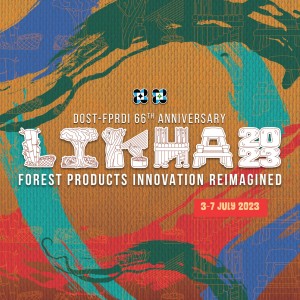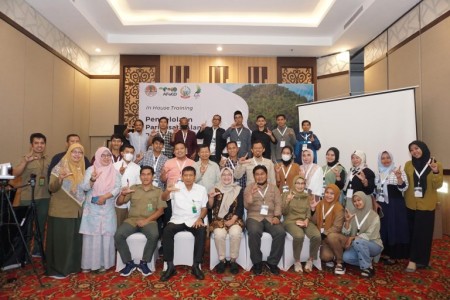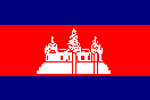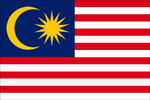Transferring technology on the integrated wood charcoal and wood vinegar manufacturing at Simei Indonesia | 01/03/2017

Simei is a camp site of PT. Wijaya Sentosa which is located in the eastern part of Indonesia namely Wondama Bay, Papua. A trip by Forest Products Research and Development Center’s (FPRDC) team is part of research collaboration activity between FPRDC and PT. Wijaya Sentosa. FPRDC’s researchers: Prof. Gustan Pari, Gusmailina and Sri Komarayati and technician, Mad Ali were welcomed by Andi Taufik Husein Dalimunte as PT. Wijaya Sentosa representative. The trip is designed for transferring technology on the integrated wood charcoal and wood vinegar manufacturing. Both integrated products are readily implemented technology for industries.

Figure 1. Crossing Wondama Bay to get into Simei camp site
Simei camp site of PT. Wijaya Sentosa is located at Simei Village, Kuri Wamesa District, Wondama Bay Regency, West Papua Province. The camp is managed by PT. Wijaya Sentosa who holds forest concession in natural forest area (IUPHHK-HA) and covers about 130,755 Ha forest areas. The company is currently in the process of sustainable forest management certification to meet the Forest Stewardship Council (FSC) requirements. In the certification process, all forest management aspects are observed and evaluated includes protecting highly conserved forest area.
Wijaya Sentosa forest concession, which is one of Sinar Wijaya Group, is grouped into five forest types: primary forest (68,766 Ha, 52.59%), secondary forest (56,804 Ha, 43.44%), mangrove forest, peat swamp forest and open areas which covers about a total of 125,570 Ha. Wijaya Sentosa forest concession is surrounded by protected forest (HL) areas of HL 1, HL 2, HL 3, HL 4, and HL Wetur. Based on the concession map, the forest production area is not overlapping with those of biodiversity priorities. Currently, there are local communities from specific tribe who lived in the forest and claimed the natural biodiversity resources in the area. In order to achieve sustainable forest management, Wijaya Sentosa develops high quality nursery to support forest replantation especially for local species such as Merbau.

Figure 2. Wijaya Sentosa forest concession map
As mentioned before, in order to achieve sustainable forest management in PT. Wijaya Sentosa, all forest management aspects such as nursery, tree plantation and social interaction between local people and forest management as well as environment aspect will be observed and evaluated. Then, actions are necessary to handle all management issues. There are various research results from FPRDC which could be implemented in the forest concession area such as wood charcoal production for energy and charcoal compost to enhance soil fertility as well as wood vinegar production for bio-preservative and latex coagulant. In fact, wood vinegar could be produced during wood charcoal manufacturing.
Transferring knowledge on the integrated wood charcoal manufacturing is one of the missions of the FPRDC researcher’s team. The trip is aiming to teach operational staffs in PT. Wjaya Sentosa in integrated wood charcoal technology. Charcoal making is aiming to optimize un-used biomass in the forest area such as tree branches and left over logs in the forest as well as other un-used lignocellulosic materials. Generally, wood charcoal is utilized for home cooking, however the charcoal is also useful to improve soil fertility.
In order to improve soil fertility, wood charcoal is added into the seedling media. Wood charcoal is a porous material which provides about 250 square meters surfaces in one gram of wood charcoal. In the normal state, charcoal is readily to absorb various substances and keep it inside the charcoal pores. The important substances will then be released slowly and gradually to supply nutrients in the soil. In term of seedling media, wood charcoal will absorb important substances and release it to keep soil healthy and improve the seedling quality and life expectancy. Then, charcoal addition into the soil may improve soil fertility and overcome high acidity, critical and poor nutrition soils for better tree plantation.
It is not only wood charcoal is useful, but the smoke that arises during wood carbonization could also be utilized. The smoke is collected and condensed into liquid smoke and it is collected into wood vinegar. Liquid smoke which is condensed from the burning lignocellulosic material contains various substances such as phenol, carbonyl, acid, furan, ethanol, lactone, hydrocarbon, aromatic poly-cyclic and other substances (Girrard, 1992). Wood vinegar is useful for aroma, taste and color, as bio-preserver because of the phenol content, and carbonyl as antibacterial and antioxidant (Pszczola, 1995). The substances are also useful for latex coagulant to replace format acid and to form brown color on sit products (Solichin, 2007).
In the laboratory, wood vinegar could be condensed using sophisticated equipment, however simple equipment could be arranged in the field. Metal cylinder container from an ex of oil container could be used as wood burner, then smoke is released into the small hole with pipe which is connected into bamboo as condenser pipe (Figure 3). During transferring the technology, carbonization trial using local wood species merbau and matoa wood took place in the modified equipment. The merbau and matoa wood charcoals and wood vinegar are shown in Figure 5.
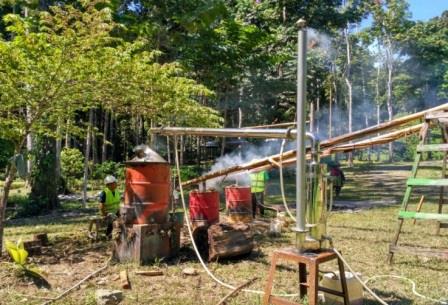

Figure 3. Integrated wood charcoal technology transfer at PT. Wijaya Sentosa

Figure 4. Transfer technology participants

Figure 5. Merbau and matoa charcoals and wood vinegar
Wood charcoal is not only for energy, but it could be used as seedling media mixture compost or known as charcoal compost. Charcoal compost is the mixture of charcoal and compost which is naturally composted by lignocellulosic compost (Figure 6). The mixture is useful as natural agent for bio-fungicide to protect tree from soft root, then the mixture known as bioactive. The charcoal in the mixture is also useful as soil fertilizer agent because the charcoal improves soil pH and enhances air and water circulation in the soil. In general, wood charcoal, wood vinegar and charcoal compost are useful for soil rehabilitation in term of soil fertility improvement, land reclamation; improve useful soil substances and protecting plant from pest and diseases.

Figure 6. Normal composting process and the mixture with charcoal
References
Siswoyo. 2015. Laporan Penilaian High Conservation Value (HCV) di Areal IUPHHK-HA PT. Wijaya Sentosa Kabupaten Teluk Wondama Dan Teluk Bintuni Provinsi Papua Barat
Darmadji, P. 2002. Optimasi pemurnian asap cair dengan metode redistilasi. Jurnal Teknologi dan Industri Pangan 13(3): 267-271.
Girrard, J.P. 1992. Smoking in technology of meat products. Clermont Ferrand. Ellis Horwood, New York pp: 165:205.
Pszczola, D. E. 1995. Tour higlights production and uses of smoke base flavors. Food Tech 49: 70-74.
Solichin, M. 2007. Penggunaan asap cair deorub dalam pengolahan rss. Jurnal Penelitian Karet 25(1): 1-12.
Komarayati, S. & Gusmailina. 2014. Rahasia di balik asap cair (The secrets behind wood vinegar). Makalah poster pada Seminar Hasil Penelitian Puslitbang Keteknikan Kehutanan dan Pengolahan Hasil Hutan. Bogor, November 2014.
Author : Dra. Gusmailina, MSi.
Translator : Krisdianto, PhD.
Editor : Ratih Damayanti, PhD.


